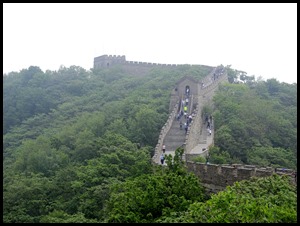Great Wall Pt 1

|
The Great Wall of
China – Part One
 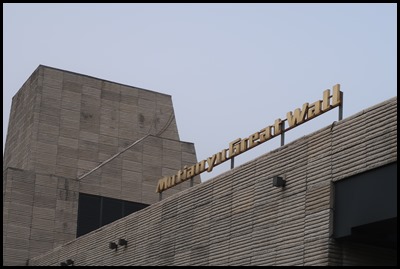 Sixty Five kilometres or about an
hour and a half north of Beijing, we arrived at some very utility looking buildings. Tickets purchased, we saw to our
right what we thought would be an Information Centre.
 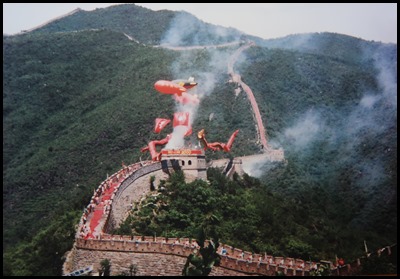 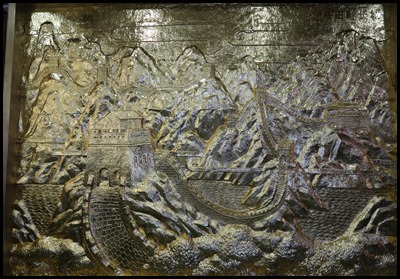 It was, but not very big. We saw a
map of the Great Wall, a picture of the wall during a festival and on the back wall was a huge frieze.
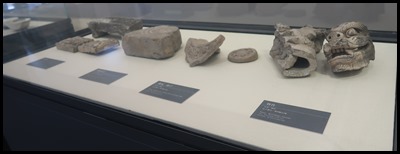 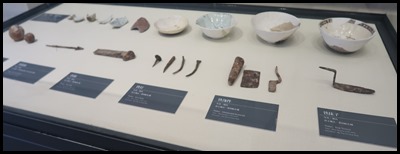 Display cases
held original bits, pieces and
artifacts.
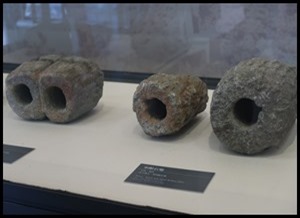  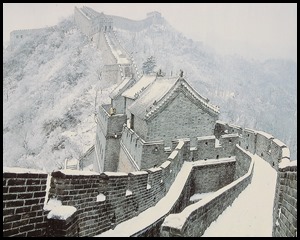 Original stone rolling stones from the late 1500s, original bricks and a picture of the wall in
winter.
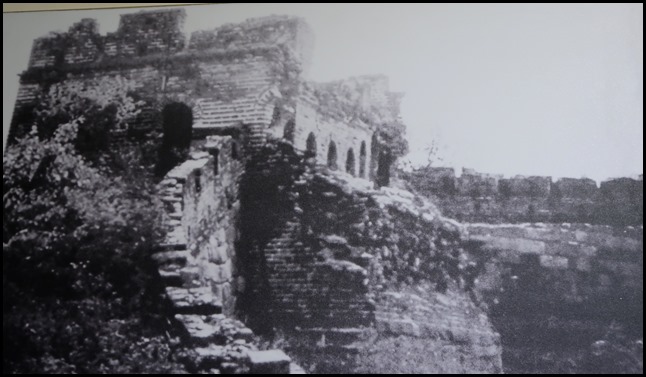 One of the watchtowers
in very poorly condition.
In September 1984, Mr. Deng
Xiaoping wrote an inscription for the event “Love China, Restore Our Great
Wall”, to elevate the drive to protect and restore the Great Wall to the love
and patriotism for China. His actions attracted a large number of sponsors in
China and overseas who contributed generously towards the restoration and
research of the Great Wall. This event not only collected funds for the Great
Wall, it has also inspired and boosted the patriotism amongst the Chinese and
galvanised national cohesion. Very pleased it did, it would have been awful
to lose the wall completely.
In 1982, the State Council
approved the development at the Mutianyu section of the Great Wall. After 6
years, the Mutianyu Great Wall scenic region was formally opened in April 1988.
The Mutianyu Great Wall has been attracting tourists from all over the world
with its unique mountainous terrain landscape.
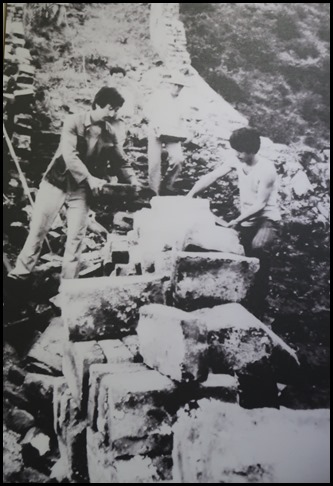 In 1952, the State Council
approved the development at the Mutianyu section of the
Great Wall. After 6 years, the Mutianyu Great Wall scenic region
was formally opened in April 1988. The Mutianyu Great Wall has been attracting
tourists from all over the world with its unique mountainous terrain landscape.
OK, it is time we went to look for ourselves.
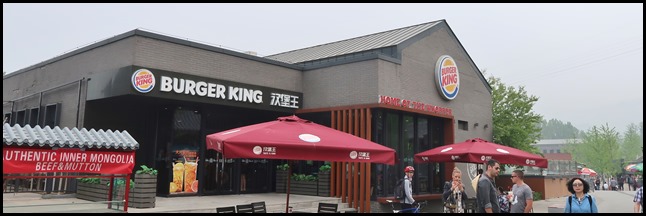 On leaving the
Information Centre, the first thing we saw
was............
 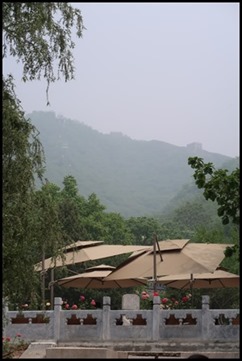 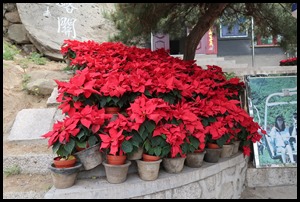 We began the fairly
steep walk up to the cable car passing well-kept
areas, walls with information, then we looked up and through the morning
haze – saw our first glimpse of the Great Wall, on we
went past the lovely poinsettias.
 My hands actually went
to my hips when I saw “Please take care of old
men.....”, Well Bear, you’re on your own.....
  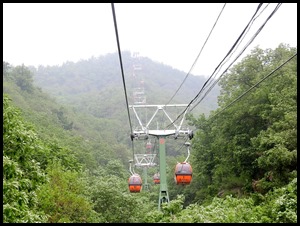 Soon through the fairly
short (by Chinese standards) queue, we waited for car
11, settled with a very smiley Bear, we headed up.
 The
chairlift sign – sadly, no
spellchecker......
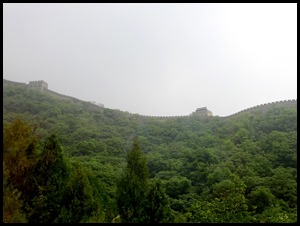 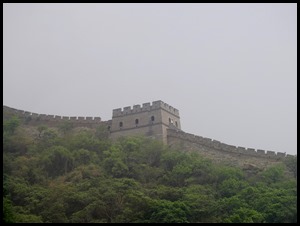  Zooming in on one of the watchtowers.
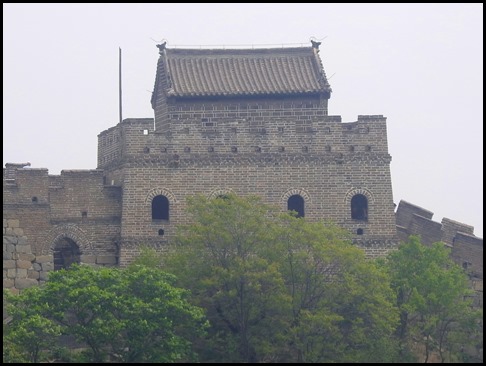 From the chairlift we saw quite a
unique structure. Zhengguantai: the sobriquet is
“San ZuoLou” it was built in the second year of the reign of Yongle in the Ming
Dynasty (1404 BC). As a gateway, there are three blockhouses that were connected
as a whole building. It has two stories. The lower story is a passageway and the
upper one has three observation pavilions, it separates a main section and a
side one. This structure is quite rare in constructions of the whole Great
Wall.
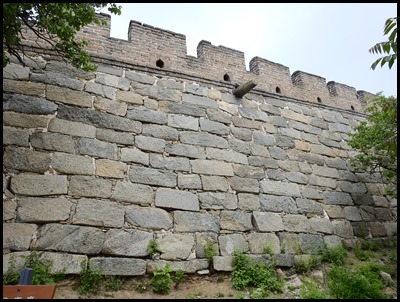 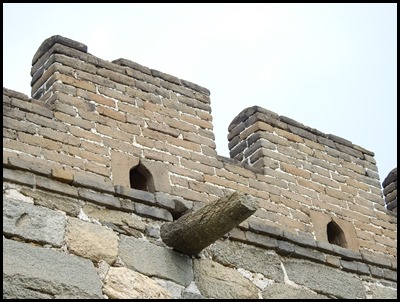 We left the cable car and marvelled,
as we looked up, at the brickwork of the Great Wall,
some of it original. We were really here.
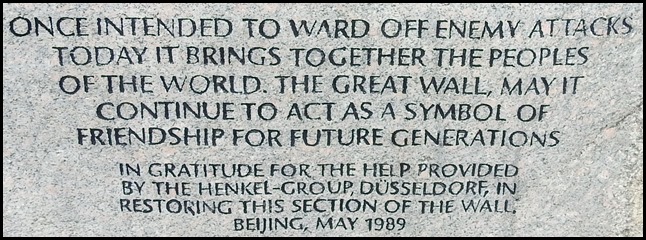 At the top of the first set of steps
we saw these words carved into a huge
boulder.
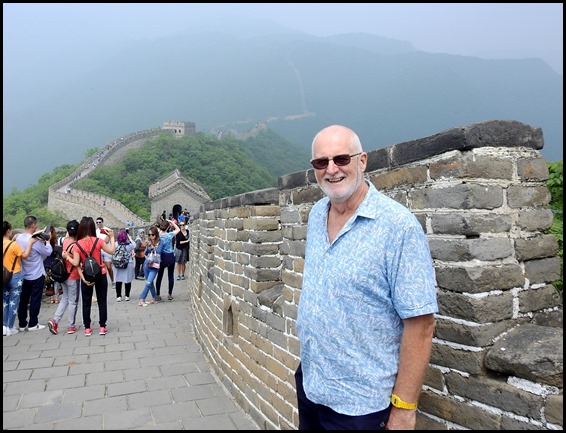 ‘Bear was
here’, just along from the cable car is Watchtower 14.
The Great Wall, one of the greatest
wonders of the world, was listed as a World Heritage by UNESCO in 1987. Just
like a gigantic dragon, it winds up and down across deserts, grasslands,
mountains and plateaus, stretching approximately 21,196 kilometres from east to
west of China. It was the state Chu who first built the wall. It was during the Qin Dynasty that the kingdom of Qin united the different parts into one empire. To defend off the invasions from northern invaders, Emperor Qin Shi Huang had all the walls joined up. Thus, the Great Wall came into being. Winding its staggering way along over 5,000 miles, the Great Wall of China needs little in the way of introduction. It's long, very long – it would take around 18 months to walk its length. Zigzagging 21,196 kilometres (13,170 miles) from Jiayuguan Pass in the west to Hushan Mountain in Liaoning in the east, the wall crosses over ten provinces and cities, including Qinghai, Gansu, Ningxia, Shaanxi, Inner Mongolia, Shanxi, Hebei, Beijing, Tianjin, and Liaoning. The Great Wall was built over many years. It is believed the original Great Wall was built over a period of approximately 20 years. The Great Wall which is mainly in evidence today was actually built during the Ming dynasty, over a period of around 200 years. The Mutianyu Great Wall is one of the best-preserved and best-known Great Wall sections. Compared with the top-notch Badaling, Great Wall at Mutianyu is less crowded, thus a good destination on hot holidays for a Great Wall tour at ease. Located 65 kilometres to the north of Beijing city. The wall width was designed at 5.8 metres for five horse riding soldiers side by side or ten foot soldiers marching abreast. Today the Great Wall measures 1,500 kilometres, the rest has disappeared during wars, weather and lack of upkeep.
Steps, Tower 15 and hazy, mountainous scenery. Awesome. Amazing.
My challenge – a fiercely potted
history...... Three Eras – 1 Primitive China 0 to 3,000 years ago. 2 Slave
China covers three Dynasties I will call Stone Age, 700 years and Confucianism.
3 Feudal China – 221 BC to 1911 over 7 main Dynasties.
Qin. First Emperor, Qin Shi Huang and
his son, plenty of uprisings. In 221 BC there were seven kingdoms, all had their
own walls as defence. The first emperor unified China and asked his general to
join the walls together. Many slaves died during this time building. Great Wall
measures 6,000 kilometres.
Han. 400 years. Silk Road for trade,
also the first silk to Europe. Repaired Great Wall and added 4,000 kilometres to
the west to protect the Silk Road from North Korea to Xin Jiang
Province.
Tang. The most powerful. Known for
landscape paintings, poets and porcelain.
Song. 150 years. Poetry, handicraft
and they moved the capital city to Kai Fung.
Yuan. The first Yuan emperor was
Mongol. Much war with Europe.
Ming. 1368-1644. Great Wall now 8,850
kilometres long, rebuilt and repaired to keep the Mongols out. First emperor
moved the capital city to Nun Ching. The third emperor moved the capital city to
Peking (now Beijing). Built Forbidden City. Known for copper and
gilding.
Qing. 1644-1911. 6,000 kilometres of
Great Wall – Shanghai Pass to Gobi Desert. Era ending with Puyi. First emperor
from NE Manchuria. Known for antiques and jewels. Second emperor retired, next
one died aged 25 which left his wife at the reins. Dowager Empress Ci Xi of the
wasteful kind. At age 73 looked 50, drank breast milk, wore three pairs of silk
slippers a day at today value US$200 per pair, thrown in the bin. Wanted 120
dishes each night at supper, maybe ate three the rest in the bin...... China now
has fifty-six nationalities.
1911-1949. Commidun them communism.
Commidun moved to Taiwan taking many Forbidden City treasures with him. 1st
October 1949 Chairman Mao and the People’s Republic of China. 1950’s built
Tiananmen Square and surrounding buildings.
1966-1976. Cultural
Revolution.
1976. Terrible earthquake during the
night, 300,000 commoners died.Three important leaders died – Mao, Jo en Lei and
a general.
1977. Mao Memorial Hall built, his
body housed in a crystal coffin for all to see. He was the man to say “If
you have never been to the wall, you are not a man”.
1978. Economic
Revolution.
1980-2015 sees the One Child Policy,
more than one have to apply to local government and pay money.
1984. Olympic Games. First gold medal
for China in shooting.......
1989. Tiananmen Square
Riot.
1990. Asian Games in
Beijing.
1997. Hong Kong returned from
UK.
1999. Macau returned from
Portugal.
2001. Joined World Trade
Organisation.
November 2002- July 2003. SARS virus,
8098 cases with 774 deaths. Chinese scientists trace virus to cave-dwelling
Horseshoe bats living in Yunnan Province.
2008. Earthquake kills
200,000.
8th August 2009. Olympic Games held
in Beijing. As a result the CBD built, highways improved, subways increased to
fifteen lines, blue trains and living standards are improved. All in readiness
for.....
2010. Expo.
How potted was that. Very potted indeed, Mrs. Steady.
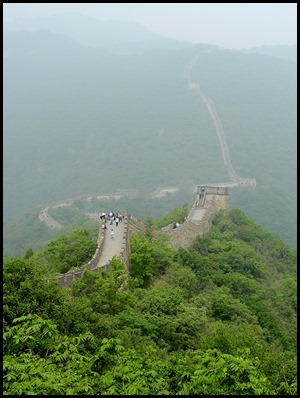  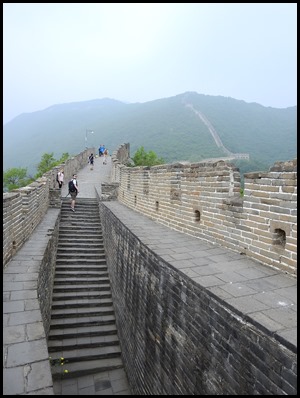 We would bimble Watchtower Beacon 14
to Watchtower Beacon 19. Taking in views, steps and
more steps.
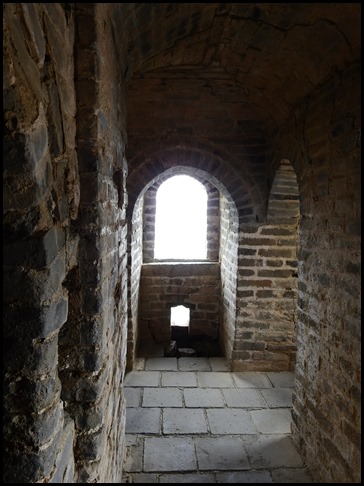 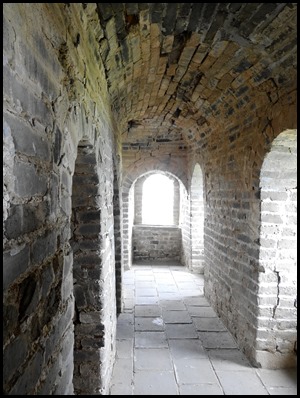 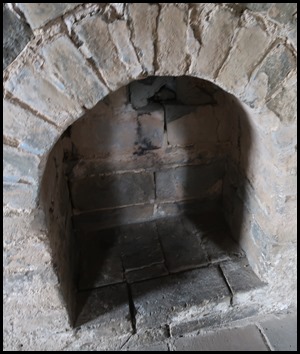 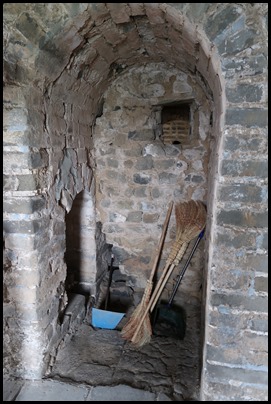 Bimbling through a
watchtower. Men were sent here on three month
watches.
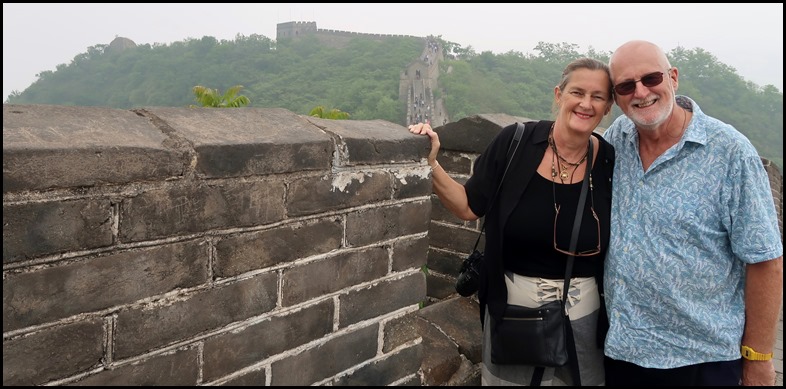 Looking back the
way we had come.
Continued |

